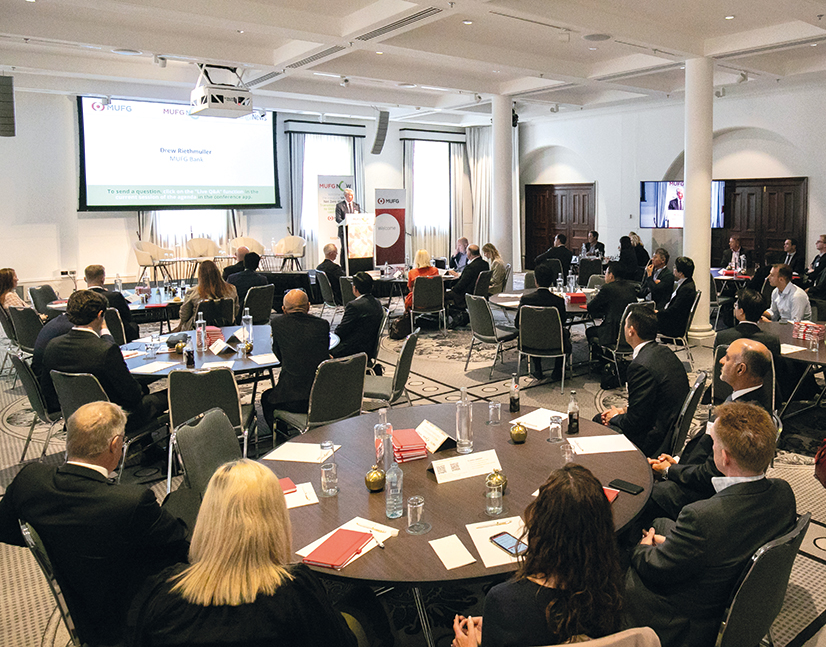
ASFI levels up in leadership on sustainability
A year after coming into existence on a permanent basis, the Australian Sustainable Finance Institute is making strides in its effort to realign financial services to support sustainability – including its collaborative work toward an Australian taxonomy and mandatory reporting (see p10). Canberra-based executive officer, Kristy Graham, discusses the institute’s plans as industry and government zero in on transition.
How have things changed for the Australian Sustainable Finance Institute (ASFI) since the election in May?
ASFI has now been established for 12 months and has started work on priority projects the finance sector sees as game changing for the growth and credibility of sustainable finance in Australia. Work is well under way on an Australian sustainable finance taxonomy, and we have built much stronger links between federal government and the finance sector.
Some of this is a function of the election outcome, but the work had already begun. ASFI was created in part to build a bridge between the finance sector, and policymakers and government. This area has reallydeveloped over the last 12 months.
In our leadership work, we have made solid progress with financial institutions to accelerate implementation of their commitments to sustainability. Working with other peak bodies and industry organisations, we provide coherent, coordinated, evidence-based and whole-of-finance-sector perspectives into key policy and regulatory issues.
We have worked with 20 other organisations on an Australian submission for the ISSB [International Sustainability Standards Board] climate reporting standards, and we engage with the government to work in collaboration on a sustainable finance strategy. Given its policy objectives, government now has the ability to step in and play a more active role in sustainable finance policy and regulation.
You are advocating for ASFI to be able to access government funding. Why?
Government has a really strong and ambitious agenda on climate but it needs private capital to invest in projects, companies and assets to achieve emissions reduction and support climate resilience. It also has a big agenda on environmental and social policy, and there are opportunities for private capital in these areas as well. We have flexibility in how we work with government and we are already doing so in a range of ways.
Our UK equivalent, the Green Finance Institute, is purely government-funded. It is tasked with bringing financial-sector perspectives into policymaking, supporting the development of new financial products and services, accelerating the achievement of climate and sustainability objectives, and coordinating and convening industry, civil society and universities around sustainable finance issues. The goal of all these things is to get more money flowing more quickly to sustainability outcomes.
ASFI is industry-funded and carries out many of the same functions. Government funding would really accelerate our ability to achieve these outcomes. There is strong alignment between government objectives and those ASFI has as an organisation, so government is a natural partner for us.
ASFI developed the Australian sustainable finance roadmap, focused on what industry can do to support the growth and credibility of sustainable finance, in a very different political context. The roadmap highlighted a potential role for government but made no explicit statement on how government should contribute to sustainable finance in line with its policy priorities. With the change in political context, there is an opportunity to be more explicit about the role government can play.
“Ultimately, we want financial institutions and businesses to institutionalise how they identify and manage climate risk and opportunity within their strategy and operations. If more businesses and financial institutions do this over time, it will accelerate the uptake and quality of transition planning, and the implementation of net zero and climate resilience strategies.”
ASFI is working with other bodies to make the case for an Australian government sustainable finance strategy. What are the key elements?
International credibility and interoperability of sustainable finance policy and regulation have been key design principles for ASFI’s work since the very beginning. We are now examining where international jurisdictions – such as the UK, Japan, Canada, Singapore and the EU – have landed on their taxonomies and making sure our work is well connected.
This work has given us a very good understanding of key design features that are common across taxonomies and how they may be incorporated into the design of an Australian equivalent. This is the starting point for our work.
We are keen to ensure an Australian taxonomy promotes the integrity of net zero transition and mobilises capital in alignment with credible science-based transition pathways. Other jurisdictions are actively using taxonomies to do this, and emerging international consensus shows the approaches are broadly interoperable.
A sustainable finance strategy would be broader than just a taxonomy. There is potential to align financial sector regulation with sustainability objectives, and implement transparency and disclosure measures – all underpinned by strong sectoral policies on climate, biodiversity, and other sustainability and social issues. This would drive growth and credibility of the sustainable finance market in Australia.
How challenging will it be to balance international alignment with the need for an Australian taxonomy to respond to local conditions?
The expectation is that we will be able to balance these objectives. While there are some regional nuances, everyone is working to ensure interoperability at the global level. Other jurisdictions want to use their taxonomies for the same thing Australia wants.
Many other taxonomies have adopted parts of the EU approach in a relatively straightforward way and, where this makes sense in an Australian context, we will likely do the same. We are working very closely with other jurisdictions to understand how they are designing taxonomies to mobilise capital in alignment with credible transition pathways that suit their particular economic circumstances. Collaboration is critical to developing a taxonomy that is usable, widely adopted, credible and interoperable.
We are implementing our taxonomy via a phased approach. The first is scoping and framework design, including analysis of international taxonomies. Phase two will see the establishment of an institutional governance structure and development of technical screening criteria for the taxonomy. The third phase is industry application.
At each stage, we will actively seek input from experts from the finance sector and other stakeholders. In phase one, we established the Taxonomy Technical Advisory Group, which has 56 members and observers from across the financial services sector. We are also getting broad stakeholder input about what an Australian taxonomy should look like.
How important is it to make climate-related financial disclosures mandatory?
It helps raise the standard of disclosures across the economy and enables the finance sector to manage sustainability risks, and identify and access opportunities. It allows consumers to make informed choices and supports regulators in combating greenwashing. A mandatory regime also promotes comparability of information.
Ultimately, we want financial institutions and businesses to institutionalise how they identify and manage climate risk and opportunity within their strategy and operations. If more businesses and financial institutions do this over time, it will accelerate the uptake and quality of transition planning, and the implementation of net zero and climate resilience strategies.
Internationally, the trend is very much toward mandatory climate-related disclosures and sustainability reporting. It is important that Australia keeps pace with international developments so we can continue to access cost-competitive international capital.
A mandatory regime comes with challenges, such as ensuring standards are future-proofed. How can these be addressed?
Many Australian businesses are already reporting in line with TCFD [Task Force on Climate-related Financial Disclosures] or complying with overseas reporting regimes. The review process for reporting is still to be determined, and regular and transparent review to ensure requirements are fit for purpose will be a critical part of implementation. But we need to start somewhere and, by making disclosures mandatory, data will improve over time.
Markets are very good at adapting to such requirements, and we will see a huge uptick in the quality and availability of data once it is clear mandatory reporting will be required from, for example, all companies covered by the Corporations Act.
Government has made it clear that, as the ISSB standards are finalised, it will move quickly to adopt them as the basis for mandatory climate-related reporting. We look forward to contributing to the implementation of this regime and also support moves by government toward more comprehensive sustainability reporting as additional standards and frameworks are developed at international level.
ASFI has participated in government organised Task Force on Nature-related Financial Disclosures (TNFD) workshops and in a cross-industry TNFD summit. What are the key takeaways?
It is clear that the Australian business and finance sectors are very strongly engaged with TNFD and natural capital, and willing to grapple with this issue despite it still being relatively new. The government has played a leadership role, providing strategic support for the development of the TNFD framework and engaging with peak bodies on activities like these workshops to build capability and understanding.
Australia has a lot to offer in this area, with deep scientific knowledge and technical know-how around measuring natural capital. We could be at the forefront globally, informing approaches to nature-related risk and creating new nature-based opportunities.
While there is still a lot of work to do, there was a real sense of optimism and a willingness to grapple with the challenges and take advantage of the opportunities natural capital presents. With our unique geography and biodiversity, it is important that Australian industry and finance sector stakeholders actively participate in the development process so the framework is fit for purpose for Australia.

HIGH-GRADE ISSUERS YEARBOOK 2023
The ultimate guide to Australian and New Zealand government-sector borrowers.

WOMEN IN CAPITAL MARKETS Yearbook 2023
KangaNews's annual yearbook amplifying female voices in the Australian capital market.










